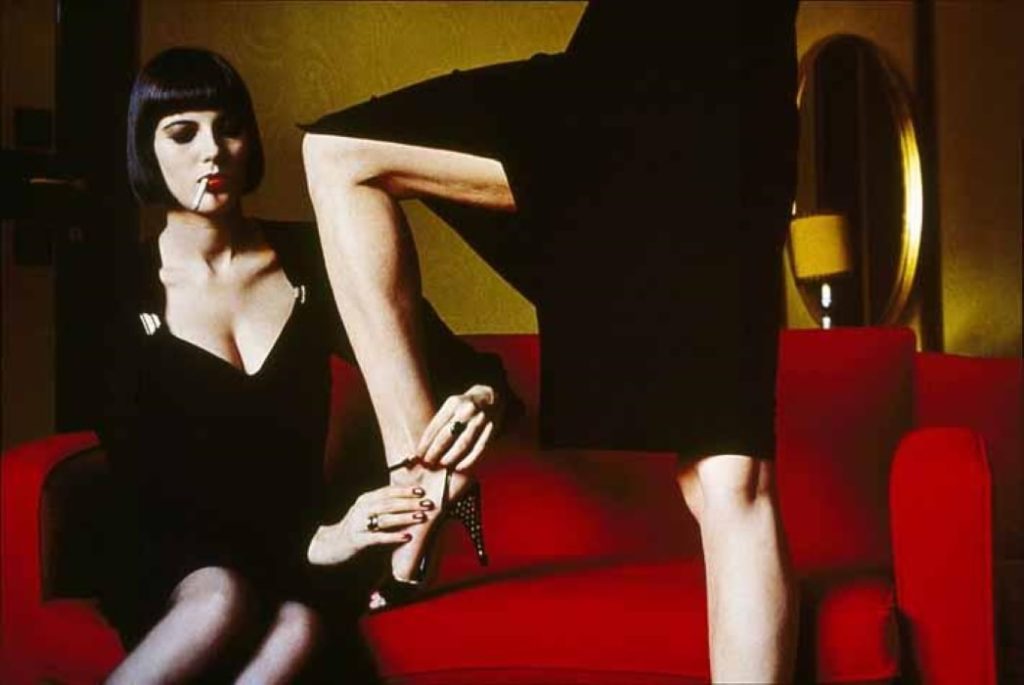Helmut Newton would have turned 100 years old on 31 October 2020. His foundation was established in Berlin-Charlottenburg in autumn 2003 and opened in summer 2004; since then, more than 50 exhibitions have been presented here. The Helmut Newton Foundation is taking this special anniversary as an opportunity to honour the exceptional photographer. It is presenting his legendary and timelessly innovative oeuvre for the first time and in a freely accessible way in a large outdoor exhibition in Berlin’s urban space on an 85-metre-long wall at the Kraftwerk Berlin, Köpenicker Straße 70 in Berlin-Mitte.

Amica, Milan, 1982
© Helmut Newton Estate
Born in 1920 as the son of a Jewish button manufacturer in Berlin-Schöneberg, Newton trained as a photographer with the renowned fashion photographer Yva between 1936 and 1938. His first self-portraits were taken in her studio in Schlüterstraße, but a short time later Newton had to flee Berlin. One of the last buildings he saw when leaving the Bahnhof Zoo in the direction of Trieste was the military casino in Jebensstraße. Many years later his foundation was to be established there, his archives stored there and his own work and that of his wife June (alias Alice Springs) shown in changing exhibitions. Despite the tragic circumstances under which Newton had to leave Berlin, Berlin remained in his heart, and he regularly returned to his home town. In 1979, for example, he produced a photographic homage to the places of his youth for the second issue of VOGUE Deutschland.

German Vogue, Berlin, 1979
© Helmut Newton Estate
As a reminder of Newton’s time in Berlin and his extraordinary work, the Helmut Newton Foundation presents a large outdoor exhibition on the 85m long wall at the Kraftwerk in Berlin-Kreuzberg, Köpenicker Straße 70; on view around the clock from 31 October to 8 November 2020.

Claudia Schiffer, Vanity Fair, Menton, 1992
© Helmut Newton Estate
Around 30 motifs from all of Newton’s creative periods as well as some quotations from the photographer have been selected for the temporary presentation HELMUT NEWTON ONE HUNDRED. Helmut Newton has never before been seen in Berlin in this way and in such picture formats. At the same time, 250 City Light Posters throughout Berlin will be covered with Newton motifs, with generous support from WALL.

Rue Aubriot, French Vogue, Paris, 1975
© Helmut Newton Estate
The series of pictures “Naked and Dressed” for the French VOGUE, which marked the transition from fashion to nudes, as well as the “Big Nudes” made Newton famous beyond the fashion world in the early 1980s and inspired numerous colleagues and visual artists to imitate or reinterpret them. Newton continued to explore the interrelation between exhibitionism and voyeurism in a sophisticated and subversive way, working for almost all the major magazines and fashion labels worldwide. The focus was rarely on a mere fashion design, but usually on an original parallel story, which in some cases contained a trace of suspense like Alfred Hitchcock’s and in others seemed to have surreal predecessors. Often it was not clear where reality ended and the staging began; everything became a confusing game of power and seduction.

Madonna, Vanity Fair, 1990
© Helmut Newton Estate
Newton created an incomparable work full of subtle seduction and timeless elegance. Sometimes he quoted scenes from mythology and art history, such as Leda and the swan, sometimes he staged his photographs as a reminiscence of his youth, including motifs such as swimming pools and exclusive hotels. Ultimately, Newton’s photographs accompanied and commented on the changing role of women in the Western society of the time.

Untitled (Chicken), French Vogue, Paris, 1994
© Helmut Newton Estate
As part of HELMUT NEWTON ONE HUNDRED, a film programme about Newton’s VVerk will be shown in the Fürstensaal of the museum on the second floor from 31 October to 8 November 2020, including “Helmut by June” (l995), the extended version of Julian Benedikt’s “SUMO” film and the documentary “Helmut Newton 4 The Bad and The Beautiful” by Gero von Boehm, which celebrated its world premiere in Berlin at the beginning of July 2020.






